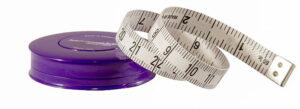If losing weight on the Steak and Eggs diet feels impossible, you’re far from alone. In fact, a staggering 7 out of 10 people trying restrictive eating plans eventually hit a frustrating weight loss plateau. You started with high hopes – effortless fat loss, boundless energy. But if you’re now stuck, confused by a low carb weight loss stall or unexpected gains, you’re likely asking: “Is this just another weight loss myth?” Or perhaps, “Am I dealing with calorie overload, a surprising lack of variety, or simply unmet individual metabolic needs?”
The good news? Your standstill isn’t failure. Instead, it points to common, easily fixed carnivore diet mistakes many people miss. This definitive guide goes beyond generic advice like ‘adjusting portion sizes’ or ‘adding variety.’ We won’t just identify precisely why you’re not losing fat on a carnivore diet; we’ll empower you with direct, science-backed solutions that actually work. Let’s cut through the noise, reveal what truly makes this powerful approach effective, and equip you to troubleshoot every factor – from sleep and stress to complex underlying health issues.
How the Steak & Eggs Diet Should Be Melting Your Fat

When done right, the Steak & Eggs diet acts as a potent catalyst for fat loss. But how does this straightforward eating plan actually prime your body to shed weight? Its effectiveness stems from a few powerful metabolic shifts.
-
Unlocking Ketosis: Your Body’s Prime Fat-Burning State
Firstly, its very essence lies in a ketogenic foundation. By dramatically cutting carbohydrate intake, you essentially force your body to switch fuel sources. Instead of relying on glucose from carbs, your system starts breaking down stored and dietary fat into molecules called ketones. This metabolic state, widely known as ketosis, is your body’s inherent “fat-burning state.” That’s why many people see rapid initial weight changes as their bodies shed water and glycogen.
-
The Power of Satiety: Eating Less, Feeling More
Beyond metabolism, the diet’s high-protein, high-fat composition offers unparalleled satiety. Imagine savoring a rich steak or perfectly cooked eggs. These nutrient-dense foods naturally keep you full and satisfied for hours. This intrinsic satisfaction often leads to a spontaneous reduction in overall calorie intake, bypassing the relentless hunger common with other diets. Ultimately, you eat less without feeling deprived.
-
Fat Adaptation
Over time, this consistent eating pattern fosters “fat adaptation.” This means your body becomes an incredibly efficient machine, expertly using both dietary fat and your own stored body fat as its go-to fuel. This remarkable metabolic flexibility offers a significant long-term advantage for sustainable weight management.
-
The Legacy of Vince Gironda: More Than Just Steak and Eggs
Historically, this exact dietary model gained iconic status through figures like Vince Gironda, the legendary bodybuilding coach. His original “Steak & Eggs model” even included a strategic “refeed day” (often mistakenly called a cheat day). This wasn’t just indulgence; it was a calculated metabolic strategy designed to optimize hormonal responses or replenish glycogen, though its nuanced purpose is often misunderstood today.
So, the scientific blueprint is clear: cut carbs, unlock fat stores, feel profoundly satisfied, and become a highly efficient fat-burning powerhouse. But if your Steak and Eggs diet isn’t working, where are the gears grinding? Let’s uncover the often-missed culprits silently sabotaging your progress.
The 18 Hidden Reasons Your Steak & Eggs (or Carnivore) Weight Loss Is Stuck
Feeling stuck when you’re putting in the effort is incredibly frustrating. Yet, the good news is that most weight loss plateaus on the Steak & Eggs diet originate from common, entirely fixable missteps. We’re going to dismantle these key carnivore diet mistakes and debunk some stubborn weight loss myths that are actively preventing your progress. Let’s tackle your most pressing questions head-on, giving you clear insights into what needs adjusting.
1. Are You Expecting Fat Loss Too Soon? (The Patience Problem)
-
- The Unvarnished Truth: Initial rapid drops on the scale are almost always water and glycogen, not actual fat. Real, sustainable fat loss is a gradual, non-linear journey. Your body requires considerable time to fully adapt, which can feel agonizingly slow at the outset.
- Actionable Tip: Ditch the daily scale ritual. Instead, snap weekly progress photos and take consistent body measurements (like waist and hip circumference). These provide a far more accurate and motivating reflection of genuine body composition changes, often showing inches lost even if the number on the scale holds firm.
2. Are You Overeating Fat and Calories? (The “Unlimited Fat” Illusion)
-
- The Unvarnished Truth: Absolutely! While fat is incredibly satiating, it packs a massive caloric punch. Generous servings of fatty ribeye, dollops of butter, or extra eggs can effortlessly push your daily intake into a calorie surplus, even with “clean”, carnivore-friendly foods. This is a primary reason your Steak and Eggs diet isn’t working.
- Actionable Tip: For a short, honest assessment (3-5 days), meticulously track your food intake using an app like Cronometer or MyFitnessPal. This isn’t about long-term restriction but about recalibrating your perception of portion sizes and caloric density. You might be surprised at how quickly “healthy fats” add up.
3. Is Too Much Protein Leading to Gluconeogenesis?
-
- The Unvarnished Truth: Indeed, it can. While protein is vital for muscle, your body possesses a clever mechanism: it can convert surplus protein into glucose through a process called gluconeogenesis. This conversion might subtly elevate blood sugar, potentially hindering your body’s ability to maintain the deep fat-burning state of ketosis.
- Actionable Tip: Focus on a moderate protein intake that supports your activity level, balanced with sufficient fat. Experiment to discover your individual optimal ratio. Aim for satiety without overdoing protein to avoid impacting ketosis.
4. Do You Have a Poor Protein-to-Fat Ratio?
-
- The Unvarnished Truth: This ratio is highly personal. Eating too lean (e.g., only chicken breast) can leave you feeling drained and constantly hungry. Conversely, a diet too high in fat without adequate protein won’t provide the satiety needed for a natural calorie deficit. It’s a delicate balance.
- Actionable Tip: Prioritize fattier cuts like ribeye, chuck roast, or bacon. Don’t shy away from adding rendered animal fat or a pat of butter. Continuously monitor your energy levels and how long you stay full. If hungry, increase fat slightly; if gaining, reassess total fat calories.
5. Are You Dehydrated & Electrolyte Imbalanced?
-
- The Unvarnished Truth: When you eliminate carbs, your body flushes significant amounts of water, and critically, essential electrolytes (sodium, potassium, magnesium). This electrolyte loss often manifests as debilitating fatigue, persistent “bloating,” muscle cramps, and a sluggish metabolism. This common low carb adaptation issue can directly cause a low carb weight loss stall.
- Actionable Tip: Consciously increase your plain water intake to 10-12 cups daily. Crucially, liberally salt your food (think Redmond Real Salt or high-quality sea salt). Consider a clean, sugar-free electrolyte supplement that includes all three key minerals to replenish what’s lost. Your energy and comfort levels will dramatically improve.
6. Are You Already Lean?
-
- The Unvarnished Truth: The less excess body fat you carry, the slower and more challenging visible fat loss becomes. Your body, wired for survival, clings more fiercely to its remaining fat stores. This isn’t a flaw in your effort; it’s a biological reality, often misconstrued as a weight loss plateau myth.
- Actionable Tip: Recalibrate your expectations. Shift your focus from the scale to other markers like muscle definition, strength gains, and how your clothes fit. Celebrate these non-scale victories, as consistent progress will now be incremental.
7. Are You Living a Sedentary Lifestyle?
-
- The Unvarnished Truth: While diet plays the leading role, a truly sedentary lifestyle can impede progress. Your Non-Exercise Activity Thermogenesis (NEAT) – the calories burned from all movement outside of structured workouts – significantly contributes to your total daily energy expenditure.
- Actionable Tip: Prioritize consistent daily movement. Aim for at least 30 minutes of brisk walking. Incorporate micro-movements throughout your day: take stairs, park further, stand while working, or stretch during breaks. Every little bit boosts your metabolism.
8. Are You Skipping Strength Training? (The Muscle-Burning Myth)
-
- The Unvarnished Truth: Absolutely, and it’s a game-changer! Muscle tissue is metabolically active, burning more calories at rest than fat tissue. By engaging in strength training, you build and preserve lean muscle mass, thereby boosting your basal metabolic rate (BMR). This effectively turns your body into a more efficient fat-burning furnace, even when you’re just sitting still. Don’t fall for the “fasting muscle loss myth” – resistance training actively protects your lean mass.
- Actionable Tip: Integrate 2-3 dedicated resistance training sessions into your week. This could involve bodyweight exercises, free weights, or resistance bands. Focus on compound movements (like squats, pushes, pulls) that engage multiple muscle groups for maximum impact.

9. Is Poor Sleep Hygiene Holding You Back?
-
- The Unvarnished Truth: Without a doubt. Consistently getting less than 7 hours of quality sleep profoundly disrupts your hunger and satiety hormones. Specifically, ghrelin (the hormone that signals hunger) increases, while leptin (the hormone that signals fullness) decreases. This imbalance directly leads to increased cravings, a larger appetite, and poor food choices.
- Actionable Tip: Make quality sleep a non-negotiable priority. Establish a consistent sleep schedule (even on weekends). Create an ideal sleep environment: dark, cool, quiet, and free of electronics for at least an hour before bed.
10. Is High Cortisol from Stress Affecting You?
-
- The Unvarnished Truth: Chronic, unmanaged stress elevates cortisol, your body’s primary “stress hormone.” Persistently high cortisol levels are scientifically linked to increased fat storage, particularly around the abdominal area (belly fat), and can lead to water retention and intense cravings for calorie-dense foods.
- Actionable Tip: Actively implement daily stress management techniques. This might include short meditation sessions, deep breathing exercises, spending time in nature, engaging in calming hobbies, or light stretching. Find strategies that genuinely help you unwind and de-stress.
11. Are You Mindless Eating or Grazing?
-
- The Unvarnished Truth: Even with compliant foods like meat and eggs, mindless snacking or “grazing” throughout the day can easily erase your hard-earned calorie deficit. If your energy intake consistently exceeds your expenditure, your body’s “fat-burning state” will be compromised, and progress will inevitably stall.
- Actionable Tip: Practice mindful eating. Eat only when you experience genuine physical hunger, and consciously pay attention to your body’s fullness cues. Establish structured meal times, and if you truly need a snack, plan it intentionally rather than impulsively grabbing food.
12. Is Your Meal Timing Irregular or Inconsistent?
-
- The Unvarnished Truth: While not a universal requirement, consistent meal timing or adopting “intermittent fasting” (IF) can be a powerful accelerator. It strategically extends the periods when your body is actively burning fat and significantly boosts metabolic flexibility.
- Actionable Tip: Experiment with a structured eating window that aligns with your lifestyle. Popular options include 16:8 (16 hours fasted, 8 hours eating) or OMAD (One Meal A Day). Find what minimizes hunger and maximizes your body’s fat-burning potential.
13. Are Your Cheat Days Too Frequent or Extreme?
-
- The Unvarnished Truth: For dedicated fat loss, a single “refeed” or “cheat day” can easily undo the caloric deficit of 5-6 preceding days, especially if it turns into an uncontrolled binge. This is a pervasive dieting myth that silently sabotages many.
- Actionable Tip: Approach refeeds with extreme caution. If fat loss is your primary objective, consider eliminating them or drastically minimizing their frequency until you reach your goal. If you must incorporate one, plan it meticulously with a pre-determined limit.
14. Do You Have Micronutrient Gaps?
-
- The Unvarnished Truth: While a well-constructed carnivore diet, especially one incorporating organ meats, is incredibly nutrient-dense, some individuals might experience subtle deficiencies. For instance, insufficient magnesium can impair energy production and muscle function, and an imbalance of potassium impacts fluid regulation. While vitamin C needs are significantly lower on carnivore, it’s still a consideration for some.
- Actionable Tip: Embrace “nose-to-tail” eating by including nutrient powerhouses like liver, heart, and kidney. These are packed with a broader spectrum of vitamins and minerals. Otherwise, prioritize consistent intake of essential electrolytes (sodium, potassium, magnesium) through careful food choices or targeted supplementation.
15. Are You Experiencing Constipation & Digestive Bloat?
-
- The Unvarnished Truth: This is an incredibly common initial side effect, primarily due to the complete removal of dietary fiber. This can lead to significant discomfort, feelings of “bloating,” and can paradoxically make it seem like you’re not losing weight, even if underlying fat loss is occurring.
- Actionable Tip: Aggressively address hydration and electrolyte intake, particularly magnesium (e.g., magnesium citrate or glycinate, which has a laxative effect for some). Allow your gut biome sufficient time to adapt to the new food composition.
16. Do You Have Hidden Inflammation or Leaky Gut?
-
- The Unvarnished Truth: While the carnivore diet can be profoundly beneficial for gut health by removing common dietary irritants, complete “gut healing” is a process that demands time. Existing, deeply rooted inflammation or “leaky gut” issues may not resolve overnight simply by cutting carbs.
- Actionable Tip: Practice patience and strict adherence to whole, unprocessed animal foods. If chronic digestive issues or systemic inflammation persist, seek consultation from a qualified functional medicine practitioner for deeper investigation and personalized strategies.
17. Are Medications or Underlying Medical Conditions Playing a Role?
-
- The Unvarnished Truth: Absolutely. Undiagnosed or poorly managed medical conditions such as hypothyroidism, insulin resistance, Polycystic Ovary Syndrome (PCOS), or certain medications (e.g., SSRIs, corticosteroids) can create formidable barriers to fat loss, regardless of how perfectly you follow your diet.
- Actionable Tip: If you suspect an underlying condition, or if you are currently taking prescription medication, it is imperative to consult your doctor. They can order relevant lab tests and collaborate with you to safely adjust your strategy. Diet is powerful, but sometimes medical intervention is an absolute necessity.
18. Is Your Diet Not Personalized for YOU?
-
- The Unvarnished Truth: Unequivocally no. No “cookie-cutter plan” will yield optimal results for every individual. Your unique metabolism, activity level, stress profile, genetic predispositions, and individual tolerances demand a precisely tailored approach. This lack of personalization is often why your Steak and Eggs diet isn’t working as expected.
- Actionable Tip: Cultivate a deep awareness of your body’s unique signals. Diligently track your progress (beyond just scale weight) and use this invaluable feedback to meticulously fine-tune your dietary approach. This continuous adjustment is key to unlocking consistent, sustainable results.
Many people believe that once they spot an issue with their diet, the fix is obvious. However, it’s not just about eating less; it’s about smarter, more targeted adjustments.
Real Solutions That Work – Your “Fix-It” Blueprint for Fat Loss
Now that you understand the common reasons your carnivore diet might not be working for weight loss, let’s dive into the actual solutions. These aren’t just theories; they’re battle-tested strategies to help you break through plateaus and get back to burning fat efficiently. We’re giving you actionable fixes that directly address those pesky carnivore diet mistakes.
-
Eating Too Much Fat or Protein (Calorie Surplus)
The Problem: You’ve learned that even on a Steak and Eggs diet, calories still count. It’s easy to accidentally overeat when your food sources are so dense. This often happens without you even realizing it, making you wonder, “Why am I not losing fat on a carnivore diet?”
The Proven Fix: For just a few days, track your macros 3x/week. Don’t think of this as a punishment; think of it as a quick “reality check.” Use a reliable app like Cronometer or MyFitnessPal. Accurately measure your portions with a food scale during this time. This isn’t about long-term obsession, but simply getting an honest picture of your actual calorie and macronutrient intake. You’ll probably spot where the extra calories are sneaking in, helping you understand why your low carb weight loss stalled.
-
Weight Loss Plateauing
The Problem: You’re doing everything right, but the scale simply refuses to budge. This weight loss plateau myth often leads people to give up, believing their body is broken or the diet no longer works. Your metabolism adapts, and sometimes it needs a little nudge.
The Proven Fix: It’s time to try intermittent fasting or a strategic carb refeed.
- Intermittent Fasting (IF): This means eating within a specific window each day (e.g., 16:8 or 20:4). By extending your fasting period, you give your body more time in a fat-burning state. This boosts metabolic flexibility and can help you naturally reduce overall calorie intake. Think of it as giving your digestive system a break and encouraging your body to tap into stored fat for energy. If your keto diet isn’t working anymore, IF is often the next step.
- Strategic Carb Refeed (for Low-Carb/Keto, not strict Carnivore): If you’re on a less strict low-carb or ketogenic diet, a planned “refeed” day, perhaps once a week or every two weeks, can actually help. This controlled increase in carbohydrates can temporarily boost leptin levels and thyroid hormones, which might get a stalled metabolism moving again. However, this is a nuanced strategy and definitely not a “cheat day” free-for-all. It’s a calculated move.
-
Constipation & Digestive Issues
The Problem: Many folks find themselves dealing with uncomfortable constipation or digestive bloat when first starting a carnivore or very low-carb diet. This lack of regularity can make you feel heavier than you are and certainly isn’t pleasant.
The Proven Fix: Add electrolytes + magnesium. When you cut carbs, your body flushes a lot of water and along with it, vital minerals. This often leads to dehydration and electrolyte imbalances, which impact bowel function. Make sure you’re generously salting your food (high-quality sea salt is great). Consider a magnesium supplement, specifically magnesium citrate or glycinate, as magnesium helps relax the bowels and encourages regularity. Proper hydration is also crucial here.
-
Low Energy or Fatigue
The Problem: Feeling zapped of energy? Many assume this is just part of adapting to a low carb diet, but persistent fatigue can signal an imbalance that’s holding back your fat loss and overall well-being. This is a common complaint when the keto diet isn’t working anymore for energy.
The Proven Fix: Increase salt, water, and fatty cuts of meat. Often, low energy on a carnivore or low-carb diet stems from insufficient sodium and dehydration. Your body needs more salt on these diets. So, salt your food liberally! Also, ensure you’re drinking plenty of water throughout the day. Lastly, don’t be afraid of the fat. Eating fattier cuts of meat (like ribeye, bacon, or added butter/tallow) provides a stable, long-lasting energy source that can combat fatigue and make you feel much more robust.
-
Persistent Cravings
The Problem: Those nagging cravings for carbs or sweets can undermine even the strongest willpower. If you’re constantly fighting urges, it’s hard to stick to any fat loss plan, especially when your Steak and Eggs diet isn’t working for satiety.
The Proven Fix: Add more lean protein + pre-prep meals. Sometimes, cravings signal that you’re simply not eating enough, or not enough protein, at your main meals. Ensure you’re consuming adequate amounts of protein – it’s incredibly satiating. Additionally, meal prep is your secret weapon. Having ready-to-eat carnivore-friendly snacks or meals (like hard-boiled eggs, pre-cooked steak slices, or some jerky) means you’re less likely to reach for something non-compliant when hunger or cravings strike.
-
Poor Sleep Quality
The Problem: You’re working hard on your diet, but if you’re not getting enough quality sleep, your body is actively working against you. Poor sleep directly impacts hormones that control hunger, fat storage, and overall metabolism, making your weight loss stall.
The Proven Fix: Improve sleep hygiene + consider testing cortisol. Prioritize sleep by establishing a consistent bedtime and wake-up time, even on weekends. Make your bedroom a sanctuary: dark, cool, and quiet. Avoid screens (phones, tablets, TV) for at least an hour before bed. If chronic sleep issues persist, consider discussing a cortisol test with your doctor. High stress and elevated cortisol can severely disrupt sleep and make fat loss incredibly difficult.
-
Suspected Thyroid Issues (Slowing Metabolism)
The Problem: Sometimes, a persistent weight loss plateau isn’t just about diet adherence; it could signal an underlying metabolic slowdown, potentially linked to thyroid function. If you’ve been on a very low-carb diet for a long time and feel sluggish, it’s worth investigating.
The Proven Fix: Test T3 & periodize refeed cycles. If you suspect thyroid issues, the first step is to consult your doctor and request comprehensive thyroid panel tests, including TSH, Free T3, and Free T4. While the carnivore diet is generally beneficial, for some, extended periods without any carbs might impact thyroid hormone conversion. If you’re on a less strict low-carb/keto plan (not pure carnivore), strategically “periodizing refeed cycles” (controlled carbohydrate reintroductions) under professional guidance might help to temporarily boost thyroid function and metabolism. This isn’t a universally recommended solution for pure carnivores, but it’s a known strategy in broader low-carb contexts.

Personalize the Steak & Eggs Diet for Unstoppable Fat Loss
This is where the magic truly happens. There’s a common weight loss myth that one diet works exactly the same for everyone. The truth? Your body is uniquely yours, and a “cookie-cutter” approach will only get you so far. To achieve truly unstoppable fat loss on the Steak and Eggs diet, you must make it your own.
-
Why One Size Doesn’t Fit All
Your unique metabolism, activity level, stress profile, genetics, and even your individual food tolerances demand a highly tailored strategy. What works wonders for one person might cause a weight loss plateau for another. Recognizing this is crucial for long-term success. It means actively engaging with your body’s feedback and being willing to adjust.
-
Essential Tracking for Personalized Insight
You can’t optimize what you don’t measure. Forget rigid rules; focus on gathering data about your body’s response.
- Weight: Weigh yourself weekly, not daily. This helps you see trends and avoids frustrating daily fluctuations that are often just water shifts.
- Body Measurements: Take measurements of your waist, hips, and thighs regularly. These often show significant fat loss even when the scale is stuck. It’s incredibly motivating to see inches disappear.
- Energy Levels: Keep a simple daily log. Are you feeling energized or sluggish? This helps you gauge if your protein-to-fat ratio or electrolyte intake is optimal.
- Hunger & Satiety: How long do you stay full after meals? Do you have constant cravings? This feedback helps you fine-tune your meal composition and timing.
- Sleep Quality: Track your sleep duration and quality. Apps like Whoop or Oura can give you detailed insights, but even a simple journal helps. Remember, poor sleep can sabotage fat loss.
- Stress Log: Jot down your stress levels daily. You might notice patterns between high stress, water retention, and stalled progress.
- Food Journal/Apps (e.g., Cronometer, MyFitnessPal): Use these for short bursts (e.g., 3-5 days) to get an honest audit of your actual calorie and macro intake. This is invaluable for identifying accidental overeating.
-
Key Adjustments to Master Your Fat Loss
Based on your tracking, you can strategically adjust various components of your Steak and Eggs diet.
- Cheat/Refeed Frequency: If your goal is aggressive fat loss and you’re struggling with a weight loss stall, consider reducing or even eliminating cheat days for a period. If you do refeed, plan them meticulously to avoid negating your efforts.
- Macros (Protein-to-Fat Ratio): This is highly individual. If you’re low on energy, try increasing healthy fats. If you’re not losing, slightly reduce overall calories by adjusting fat intake while maintaining adequate protein. It’s about finding your personal balance for satiety and energy.
- Meal Timing: Experiment with different fasting windows. Some thrive on a 16:8 schedule, while others prefer OMAD (One Meal A Day). Find what helps you manage hunger, boosts energy, and extends your fat-burning periods effectively.
-
Optional Add-Ons (Consider with Guidance)
For those looking to push further or address specific challenges, some advanced strategies can be considered. These are generally best discussed with a qualified health professional to ensure they align with your individual health profile.
- Carb Cycling (for Low-Carb/Keto, not strict Carnivore): This involves strategically reintroducing carbohydrates on certain days. It can sometimes help break a weight loss plateau by “resetting” hormones like leptin and thyroid. This is a more advanced technique and requires careful planning.
- Supplements: While whole foods are primary, certain supplements can be beneficial. Electrolytes (sodium, potassium, magnesium) are crucial, especially during adaptation. Creatine can support strength training, and magnesium can aid sleep and digestion. Always research and choose high-quality supplements.
Debunking Common Weight Loss Myths on Carnivore & Low-Carb Diets
(This section directly targets common “weight loss myths,” “dieting myths,” and specific “calorie myths” with clear, concise debunking, reinforcing accuracy with scientific backing.)
-
First Myth: “You Can Eat Unlimited Fat and Still Lose Weight.”
- Reality: While fat is satiating, calories still matter for fat loss. A surplus, even from healthy fats, leads to weight gain.
-
2nd Myth: “Keto/Carnivore = Automatic Weight Loss.”
- Reality: While highly effective, metabolic adaptation and adherence issues can lead to a “keto not working anymore” scenario. It requires conscious effort and troubleshooting, not just adherence to the food list.
-
3rd Myth: “If You’re Not Losing Weight, You’re Not Doing It Right.”
- Reality: Weight loss is non-linear. Plateaus are normal. It doesn’t mean failure, it means your body is adapting, and you need to adjust your strategy. This is a cruel “weight loss plateau myth.”
-
4th Myth: “Calories Don’t Matter on Carnivore/Low-Carb.”
- Reality: The “calorie myth” is pervasive. While the source of calories matters for health and satiety, thermodynamics still applies. To lose fat, you need a caloric deficit.
-
5th Myth: “Starvation Mode Stops All Fat Loss.”
- Reality: While metabolism can slow with severe restriction (adaptive thermogenesis), your body will still burn stored fat in a deficit. The “starvation mode myth” is largely exaggerated in the context of typical dieting.
Your Quick Questions Answered: Steak & Eggs Diet FAQs
We know you have specific questions, and getting direct, concise answers quickly is crucial for your success. Here are the most frequently asked questions about the Steak and Eggs diet and weight loss plateaus, delivered in a clear, Google-friendly format to give you immediate insights.
-
How long before I truly lose weight on the Steak and Eggs diet?
The initial weight loss you see (often in the first 2-4 weeks) is primarily water and glycogen. Expect consistent, noticeable fat loss to typically begin within 4-8 weeks. However, this timeframe varies significantly based on your starting point, your adherence, and your individual metabolism. Remember, real fat loss is a non-linear process.
-
Can I eat eggs every day on carnivore?
Absolutely, yes. Eggs are a highly nutritious and versatile staple of most carnivore diets, including the Steak & Eggs model. They provide excellent protein, healthy fats, and a wide array of essential vitamins and minerals, making them a perfect daily food.
-
Is the Steak and Eggs diet safe for women?
For most healthy women, yes, the Steak & Eggs diet can be a safe and highly effective approach. Nevertheless, individual hormonal responses can differ. It’s crucial for women to prioritize sufficient healthy fat intake, manage stress effectively, ensure adequate sleep, and diligently listen to their bodies’ signals. If you have any pre-existing medical conditions or experience significant hormonal disruptions, it’s always wise to consult with your doctor or a qualified health professional.
-
Do I need cheat days to lose fat effectively on this diet?
No, you generally do not need cheat days for effective fat loss. For strict fat loss, unplanned “cheat days” often completely negate your weekly calorie deficit and can even trigger uncontrollable cravings. Strategic “refeeds” (controlled carbohydrate reintroductions) are sometimes used in specific athletic or bodybuilding contexts, but they are not a requirement for general fat loss on a carnivore or very low-carb diet.
-
What if I’m gaining weight on carnivore?
If you’re gaining weight on a carnivore diet, it almost always indicates a consistent calorie surplus. Despite the diet’s natural satiety, it’s entirely possible to overeat calorie-dense animal fats. Re-evaluate your portion sizes, meticulously track your intake for a few days to identify hidden calories, ensure you’re well-hydrated with adequate electrolytes, actively manage your stress levels, and optimize your sleep quality. Revisit Section 2 for a detailed troubleshooting guide that directly addresses these common carnivore diet mistakes.
Final Thoughts: Don’t Give Up – Tweak Smarter!
Many people quit powerful dietary strategies like the Steak & Eggs diet just before they discover their breakthrough. However, you now possess the most crucial knowledge: understanding precisely why your Steak and Eggs diet isn’t working and, more importantly, how to fix it. Fat loss is rarely a perfectly linear path; expect plateaus and non-linear progress, especially on low-carb and carnivore diets. These are not failures, but rather signals that your body is adapting and requires a strategic adjustment.
With the science-backed insights and actionable strategies provided in this guide, you have the power to transform your results. Your journey to sustainable fat loss boils down to three core pillars: the right setup of your diet, unwavering consistency in your approach, and meticulous personalization based on your unique body’s signals. By implementing these smarter tweaks, the Steak & Eggs diet can indeed become an incredibly powerful and effective tool for achieving your fat loss goals.




